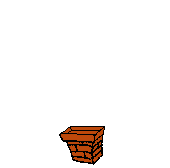

 Composting
Composting


Compost does several things to benefit the soil that synthetic fertilizers cannot do.
First, it adds organic matter, which improves the way water interacts with the soil. In
sandy soils, compost acts as a sponge to help retain water in the soil that would
otherwise drain down below the reach of plant roots (in this way, it protects plants
against drought). In clay soils, compost helps to add porosity (tiny holes and
passageways) to the soil, making it drain more quickly so that it doesn't stay waterlogged
and doesn't dry out into a bricklike substance. Compost also inoculates the soil with vast
numbers of beneficial microbes (bacteria, fungi, etc.) and the habitat that the microbes
need to live. These microbes are able to extract nutrients from the mineral part of the
soil and eventually pass the nutrients on to plants.

A great variety of things can be composted at home, saving them from a one-way trip to the landfill, and turning them into a valuable soil amendment for home use. This list describes some of the items you may want to add to your home compost pile. You may want to read about how to compost to learn about the difference between 'brown' and 'green' ingredients and the roles each plays in the composting process.
The following items can be added to your compost pile:
